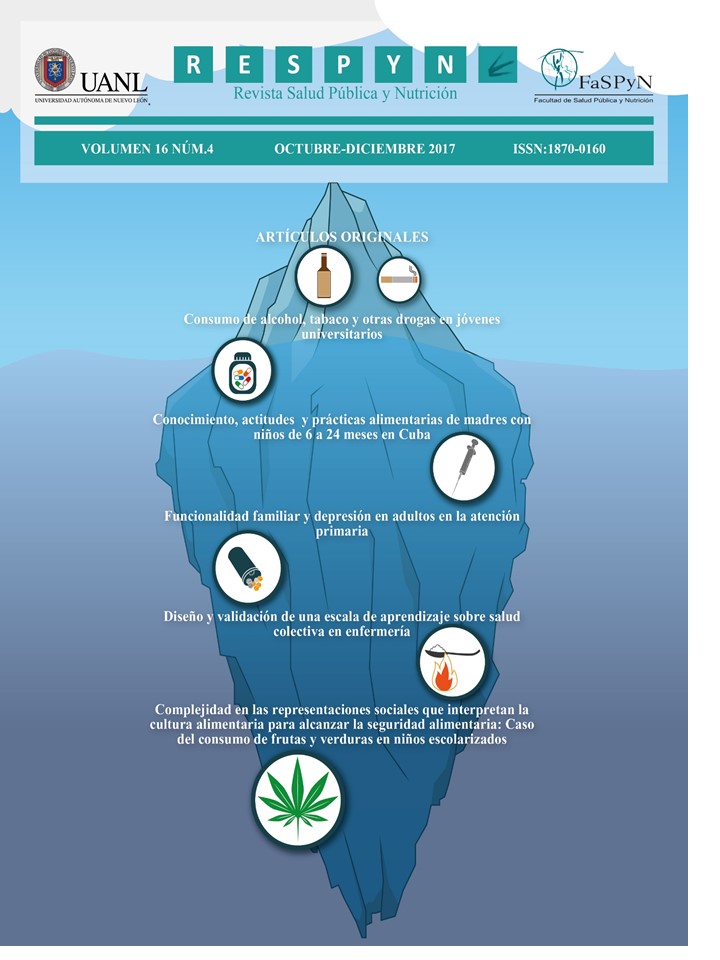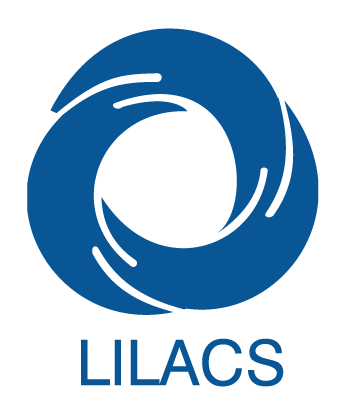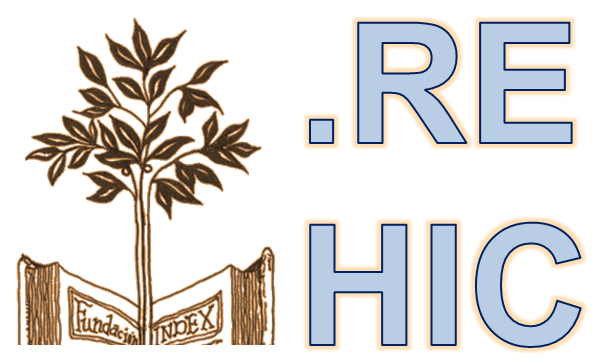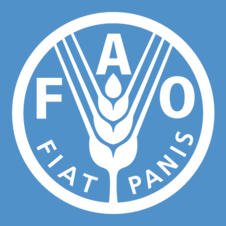DISEÑO Y VALIDACIÓN DE UNA ESCALA DE APRENDIZAJE SOBRE SALUD COLECTIVA EN ENFERMERÍA
DOI:
https://doi.org/10.29105/respyn16.4-4Abstract
Introducción: Este artículo muestra el proceso de diseño y validación de una escala, la cual se construye a partir de cinco dimensiones de la enseñanza situada, y permite evaluar el aprendizaje sobre Salud Colectiva. Objetivo: Diseñar y validar una escala de aprendizaje sobre Salud Colectiva en Enfermería.Material y Métodos: Se estructuró en cinco fases: 1) Revisión de la literatura; 2) Diseño del instrumento; 3) Jueceo de expertos; 4) Aplicación de un piloto; 5) Análisis estadístico para medir el poder de discriminación, grado de dificultad de los ítems y Coeficiente de Alfa de Cronbach. Resultados: Se obtuvo un instrumento de 40 ítems, el cual considera cinco dimensiones del aprendizaje: genuino (8 a 40 puntos), significativo y reflexivo (7 a 35 puntos), experiencial-multidimensional (9 a 45 puntos), autónomo (6 a 30 puntos) y conjunto (10 a 50 puntos), que derivan en un puntaje total que va de 40 a 200 puntos. Conclusiones: Los resultados obtenidos del jueceo de expertos y pruebas estadísticas indican que la escala mide el aprendizaje genuino, conjunto, autónomo, reflexivo y experiencial de los alumnos a partir a los conocimientos adquiridos sobre salud colectiva, por lo que puede utilizarse para este fin.
Palabras Clave: escala, enseñanza situada, salud colectiva.
ABSTRACT
Introduction: This article shows the process of design and validation of a scale, which is constructed from five dimensions of situated teaching and allows evaluating the learning of collective health. Objective: To design and to validate a scale of learning on collective health nursing. Methods: It was structured into five phases: 1) review of the literature; 2) design of the instrument; 3) evaluation of experts; 4) application of a pilot; 5) statistical analysis to measure the power of discrimination, degree of difficulty of the items and Cronbach’s alpha coefficient. Results: An instrument of 40 items was obtained, which considers five dimensions of learning: genuine (8 to 40 points), meaningful, and reflective (7 to 35 points), experimental -multidimensional (9 to 45 points), self-employed (6 to 30points) and set (10 to 50 points), derivative in a total a score of 40 to 200 points. Conclusions: The results obtained from the evaluation of experts and statistical tests indicate that the scale measures the genuine learning, joint self-employed, reflective and experimental of the Students from the knowledge acquired about the collective health and that can be used for this purpose.
Key Words: scale, situated learning, collective health
Downloads
References
Díaz-Barriga, A. F. (2003). Cognición situada y estrategias para el aprendizaje significativo. Revista electrónica de investigación educativa, 5 (2), pp. 105-117. Recuperado de: http://www.redalyc.org/pdf/155/15550207.pdf
Díaz-Barriga, A. F. (2005). Principios de diseño instruccional de entornos de aprendizaje apoyados con TIC: Un marco de referencia sociocultural y situado. Tecnología y Comunicación Educativas, 20 (41), pp. 4-16. Recuperado de: http://investigacion.ilce.edu.mx/tyce/41/art1.pdf
Escobar, P. J, Cuervo, M. A. (2008). Validez de contenido y juicio de expertos: una aproximación a su utilización. Avances en medición, 6, pp. 27-36. Recuperado de: http://www.humanas.unal.edu.co/psicometria/files/7113/8574/5708/Articulo3_Juicio_de_expertos_27-36.pdf
Garcia, J. (1971). Paradigmas para la enseñanza de las ciencias sociales en las escuelas de medicina. Educación Médica y Salud, 5 (2), pp.130-164. Recuperado de: http://www.bvs.sld.cu/revistas/spu/vol_36_04_10/spu14410.htm
Martin, A. M. (2004). Diseño y validación de cuestionarios. Matronas profesión, 5 (17), pp. 23-29. Recuperado de: http://www.enferpro.com/documentos/validacion_cuestionarios.pdf
Morales, P. (2009). Análisis de ítems en las pruebas positivas. Facultad de Ciencias Humanas y Sociales. Recuperado de: https://educrea.cl/wp-content/uploads/2014/11/19-nov-analisis-de-items-en-las-pruebas-objetivas.pdf
Ospina, R. B., De Jesus, S. J., Aristizabal, B. A., Ramírez, G. M. (2005). La escala de Likert en la valoración de los conocimientos y las actitudes de los profesionales de enfermería en el cuidado de la Salud en Antioquia. Revista de investigación y educación en enfermería, 23 (1), pp. 14-29. Recuperado de: http://www.redalyc.org/articulo.oa?id=105215401002
Rojas, G. H. (2006). Enseñanza situada: Crear contextos de aprendizaje de alto nivel de situatividad. Revista del Centro de Investigación. Universidad la Salle, 7 (25), pp. 109-114. Recuperado de: http://www.redalyc.org/articulo.oa?id=34202508
Ruíz, B. A. (2009). Método de encuesta: construcción de cuestionarios, pautas y sugerencias. Rev d’Innovació i Recerca en Educació, 2, pp. 96-110. Recuperado de: http://www.raco.cat/index.php/REIRE/article/view/131531/181353
Ruiz, A. (2014). La operacionalización de elementos teóricos al proceso de medida. Universitat de Barcelona. Disponible en: http://hdl.handle.net/2445/53152
Sagástegui, D. (2004). Una apuesta por la cultura: el aprendizaje situado. Revista electrónica de educación, Sinéctica, 2004 (24), pp. 30-39. Recuperado de: http://oai.redalyc.org/articulo.oa?id=99815918005
Serrano, J. M., Pons R. M. (2011). El constructivismo hoy: enfoques constructivistas en educación. Revista electrónica de investigación educativa, 13 (1), pp. 1-27. [30 de noviembre de 2016]. Recuperado de: http://redie.uabc.mx/vol13no1/contenido-serranopons.html
Toledo, C. M., Rocha, M. M., Mares, C. J. (2010). Recolección de datos cuantitativos. En: Hernández, S. R., Fernández, C, C., Baptista, L. P. Metodología de la investigación, pp. 198-275. Perú: Mc Graw Hill interamericana.
Quero, V. M. (2010). Confiabilidad y coeficiente Alpha de Cronbach. Telos, 12 (2), pp. 248-252. Recuperado de: http://www.redalyc.org/pdf/993/99315569010.pdf
Welch, S., Comer, J. (1988). Quantitative Methods for public administration: tecniques and aplications. Virginia: Brooks/Cole Publishing Company.
Downloads
Published
How to Cite
Issue
Section
License
The rights of the work belong to the author or authors, however, by sending it for publication in the Public Health and Nutrition Magazine of the Faculty of Public Health and Nutrition of the Autonomous University of Nuevo León, they grant the right for its first publication in between electronic, and possibly, in print to the Public Health and Nutrition Magazine. The license used is the Creative Commons attribution, which allows third parties to use what is published whenever the authorship of the work is mentioned and the first publication that is in the Public Health and Nutrition Magazine. Likewise, the author or authors will take into account that it will not be allowed to send the publication to any other journal, regardless of the format. The authors will be able to make other independent and additional contractual agreements for the non-exclusive distribution of the version of the article published in the Public Health and Nutrition Magazine (e.g., institutional repository or publication in a book) provided they clearly state that The work was published for the first time in the Public Health Magazine, Magazine of the Faculty of Public Health and Nutrition of the Autonomous University of Nuevo León.














